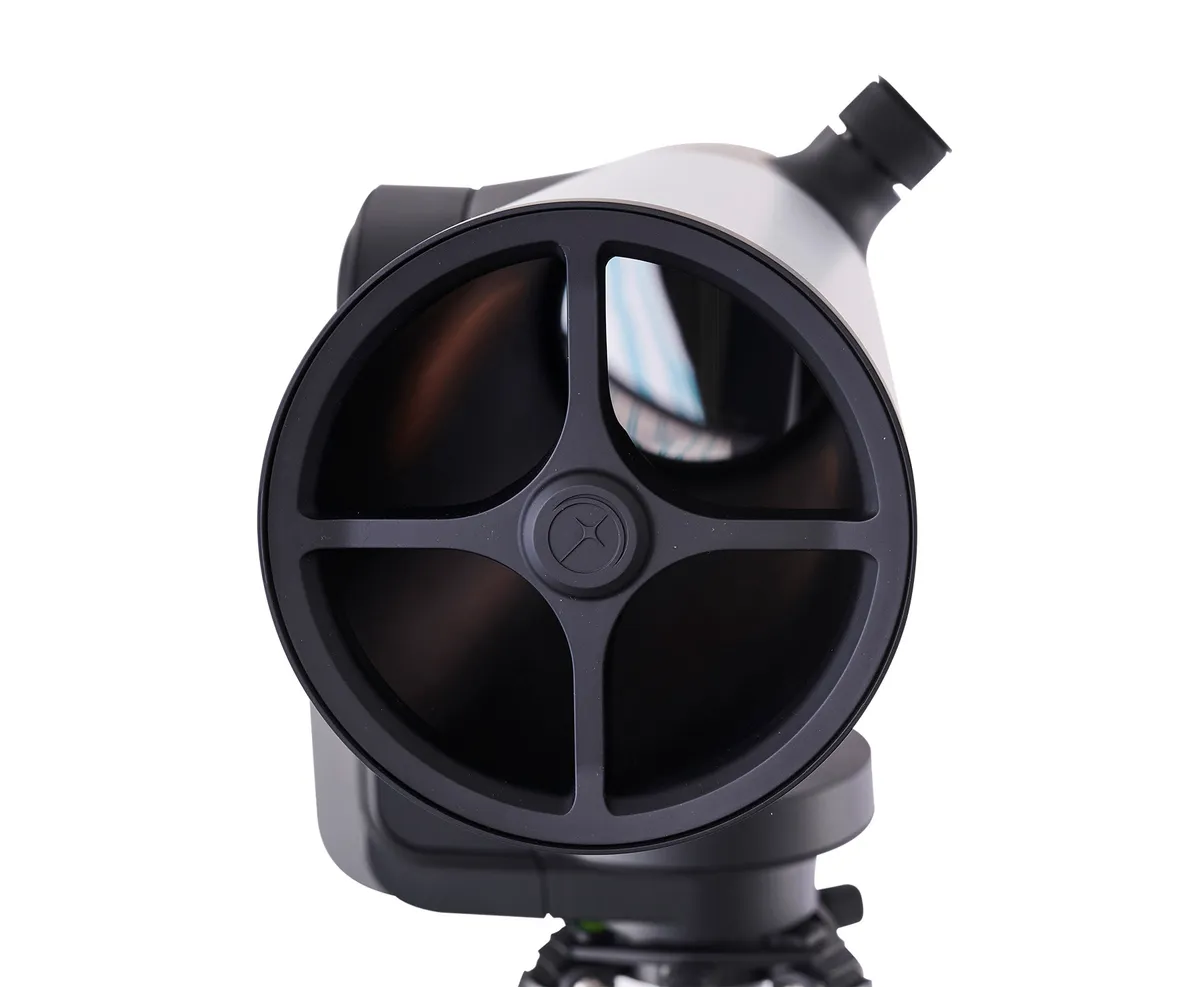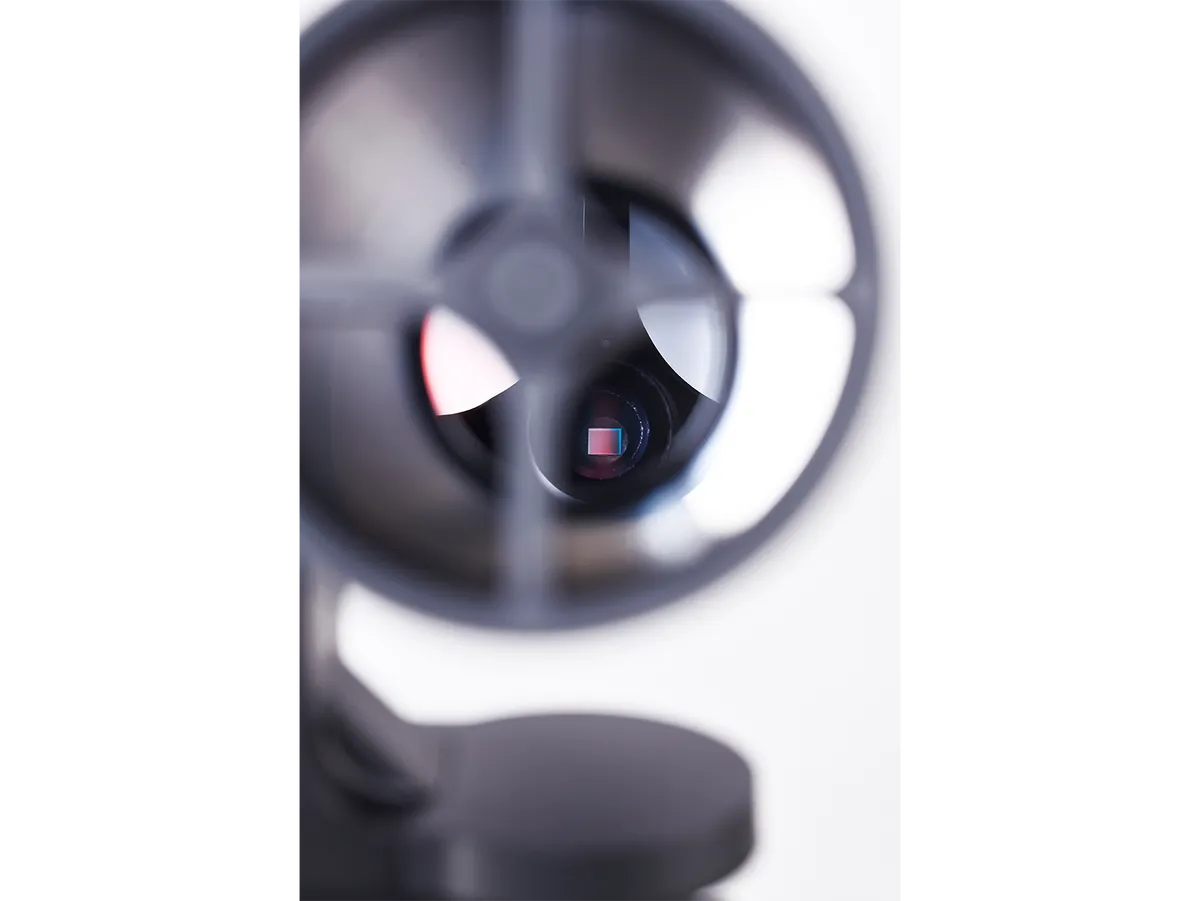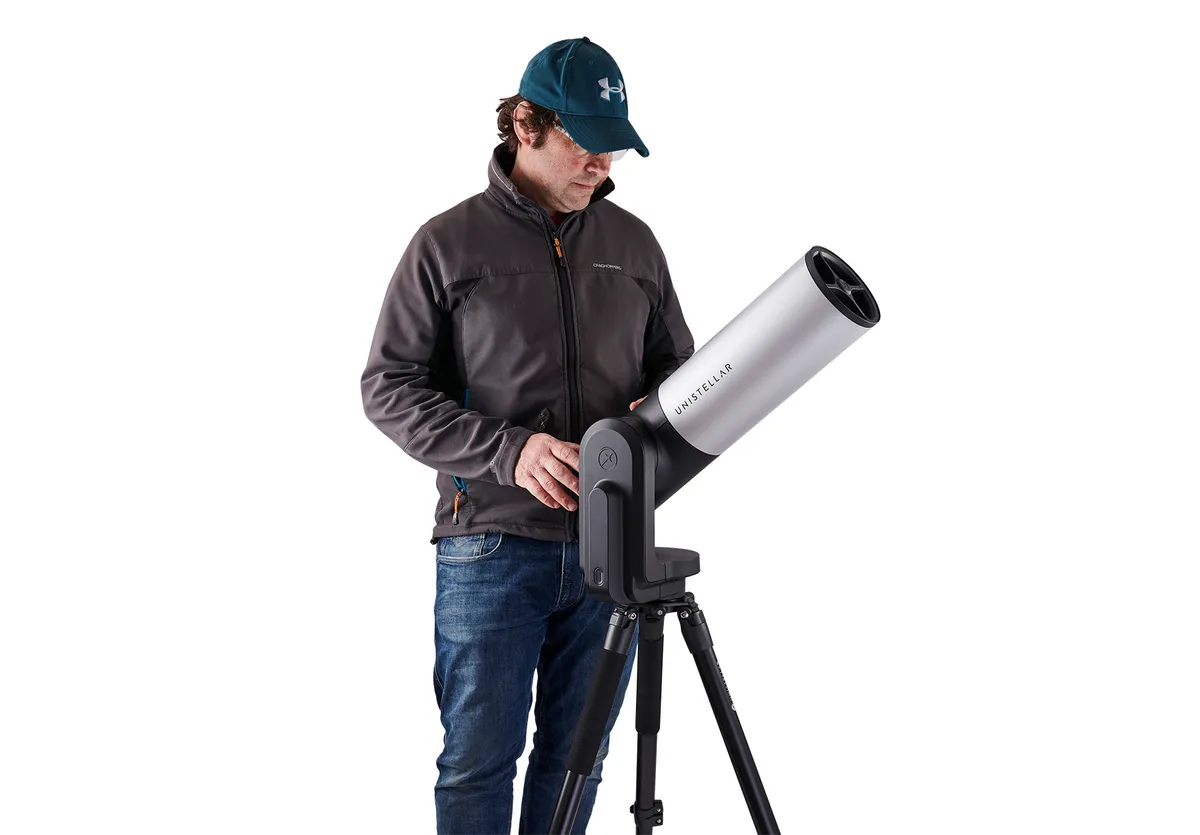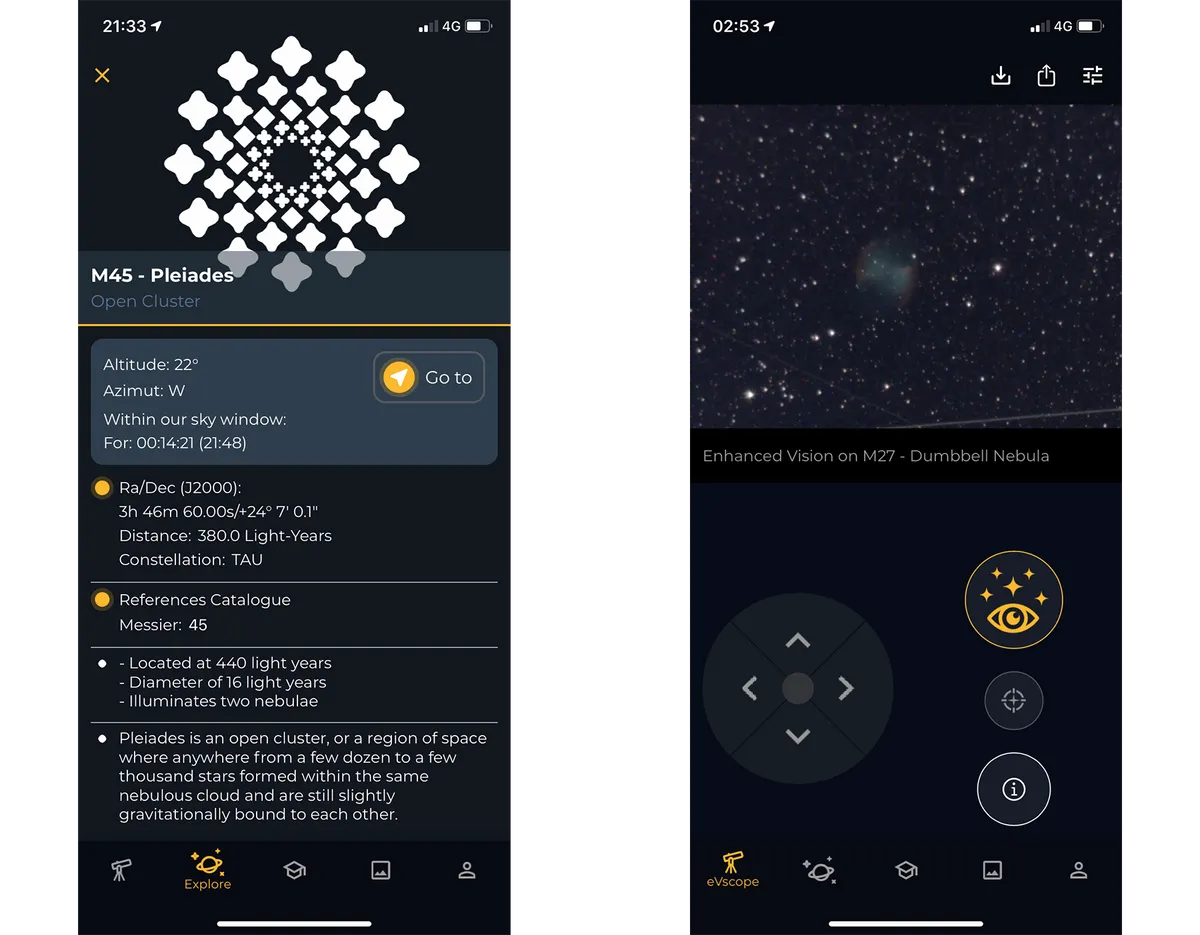Small scopes will not produce detailed images like those often found on their nicely designed boxes. The Unistellar eVscope challenges that view, while perhaps giving an insight into the future of visual astronomy.
The telescope was developed as a user-friendly system – by Unistellar in association with the SETI Institute – to be used for citizen science projects, so we were eager to check it out.
Essentially, the eVscope marries a Sony IMX224 sensor with a 4.5-inch, f/4 reflector and an electronic eyepiece, alongside cutting-edge electronics and computing.
The telescope tube sits on a single-arm computerised altaz mount attached to a sturdy, adjustable height tripod.
Although the eVscope looks neat, the eyepiece seems unusually placed when compared with standard reflectors.
Its position, however, creates a more comfortable viewing position and experience; instead of collecting light from a secondary mirror, the eyepiece receives the signal electronically, meaning it doesn’t have to be placed higher up the tube.

The spider vane at the top of the tube holds the Sony sensor at the point where light, having travelled down the tube to the mirror, is focused directly directly back at it.
The data is processed on board in the mount and then sent to the eyepiece, which delivers impressive colour results. We found that stars, for example, showed up as particularly colourful, while comets showed a definite greenish hue.
This is what makes the eVscope system stand out. Normal 4.5-inch (115mm) reflectors show galaxies and nebulae as pale imitations of their true nature and can often disappoint, whereas the eVscope builds up a live image in colour using live stacking and registration.
Galaxies and nebulous targets, including those that would normally be considered too faint for such an aperture, are revealed in detail as you watch through the eyepiece.
For example, we were able to view and image Comet Atlas, which had started to disintegrate and was no longer visible in a 10-inch (250mm) reflector.

Once the telescope is powered up you can connect and control it via the Unistellar app, which is available for iOS and Android smartphones (but not for tablets at the time of writing).
The telescope generates its own Wi-Fi network which you connect to, allowing control of the eVscope.It then automatically images the field of view and identifies where it’s pointing by plate solving a database of several million stars.
We found it useful to use the virtual joystick on the app to point roughly at 45° to the horizon as it seemed to improve the accuracy of the initial pointing.
Once it has finished initialising and identifying the star field it is ready for you to choose your target from the explore tab of the app.
We took a tour of the suggested targets, ranging from Venus to galaxies (including M81 and M82, M65 and M66), globular clusters M5 and M13, the Beehive Cluster M44 and later in the night the Ring Nebula and Veil Nebula among many others.
One thing to note is that the eVscope’s field of view is 30 arcminutes, so although you can just about fit the Moon in the view, large targets such as the Pleiades and the Andromeda Galaxy are only partly viewable.
There are lots of targets to choose from, however, and we were able to view and image Comet Atlas at a time when others could not view it with larger instruments.
To see these targets slowly appearing in colour in both the eyepiece and smartphone view was a revelation.
The eVscope is certainly an amazing step forward and requires so little effort from the user that anyone can use it. That ease of use does come at a price, however, which may put some observers off.

Easy-to-control app
At the heart of the eVscope is the all-important Unistellar app that controls every aspect of the telescope with the touch of a finger.
The mount sets up a Wi-Fi network and you join it with your smartphone. The app then recognises the scope and works out where it’s pointing by automatically plate solving the star field.
Once done, it confirms the Go-To function, and live view is activated so you can tap on the explore tab to chose from the suggested targets.
The initial view may appear quite dim with no sign of the object, but you can tap to activate an ‘Enhanced Vision’ mode and very quickly the view is transformed both in the eyepiece and on screen.
You can make manual adjustments to improve the view and then save the image to your phone’s photos and also share later with the citizen science project.
There is more to explore in the app, including an option to input coordinates to find targets not in the suggested list. It’s easy to lose yourself exploring them, forgetting you are using a small telescope.

Optical tube
The mirror and sensor are housed in a tube 65cm long and 23cm wide, the latter including
the mounting arm near the base. The electronic eyepiece can be focused and lies low down the tube, giving easy access and a comfortable viewing experience.
Optics
The design incorporates a 114mm (4.5-inch) diameter mirror with a focal length of 450mm, which gives a focal ratio of f/4. At the front end, the spider vane (which normally holds a secondary mirror) holds the Sony Exmor IMX224 imaging sensor.
Mount
The mount is integrated into the optical tube and houses the onboard computer, altaz motors and the lithium-ion rechargeable battery. On the side is an on/off touch button which lights up red when powered up, and underneath are two USB ports: one for charging and another for powering a smartphone.
Tripod
The black, aluminium tripod is specifically designed for the Unistellar eVscope and is sturdy with plenty of adjustment to position the eyepiece at a good height for comfortable viewing. It also contains a bubble level to ensure an accurate setup and alignment.
Accessories
A front cover dust cap helps protect the tube and mirror from unwanted dust, which can otherwise decrease performance. The dust cap also contains a surprise – a detachable Bahtinov mask to help with focusing. The eyepiece has a rubber plug-in dust cap to protect it while the eVscope is not in use.
Vital stats
- Price £2,599 (+ £59 shipping)
- Optics 114mm (4.5-inch) reflector
- Focal length 450mm, f/4
- Sensor Sony Exmor IMX224
- Mount Motorised single arm, altaz, Go-To
- Power In-built lithium-ion rechargeable (9-hour) battery
- Tripod Aluminium, adjustable height
- Ports USB-C (for power) and USB-A for charging smartphone
- App control Unistellar app for smart phones
- Weight 9kg
- Supplier Unistellar SAS
- Email contact@unistellaroptics.com
- unistellaroptics.com
This review originally appeared in the July 2020 issue of BBC Sky at Night Magazine.
